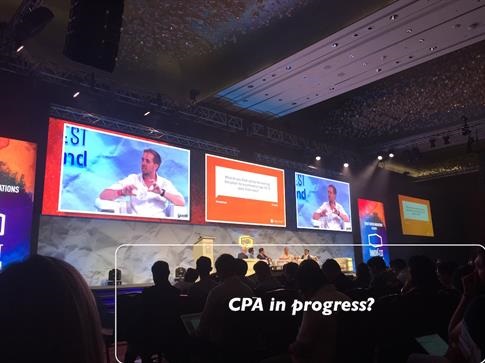
At the recently concluded InnovFest Unbound conference in May, a group of key players in the online commerce industry were discussing how to navigate the current digital landscape amidst the buzz of big data. Nick Nash, Group President of Garena, opined that while we now have access to immense data and information, they are useless unless they help us make better decisions. For example, Fitbit devices are branded as wearable tools to help us develop
a healthier lifestyle by tracking the number of steps we take, our heart rate, how much we sleep, etc. In short, they collect a lot of data. The question
is whether the data collected by Fitbit devices actually makes a difference to our well-being.
With the rise of the internet of things (IOT) and the quantified self (QS), the volume of information streaming in will continue to rise unabated and at
exponential rates. Our ability to process the influx of data coming from all spheres of our lives will be a function of how well we can pay attention
to the right things at the right time. This is a key attribute of mindfulness. Think of mindfulness as the way you manage your attention like a spotlight.
As we navigate through this digital revolution, mindfulness will become increasingly vital to our well-being, decision-making and performance. Why?
Because what we pay attention to and how we maintain our focus amidst an avalanche of data influences the type of information we choose to examine,
colours our perception and impacts the decisions we make.
The average attention span in 2015 was 8.25 seconds, down from 12 seconds in 2000.
For comparison sake,  the average attention span of a gold fish is actually better at 9 seconds. These statistics are suggestive of the fact that our ability to pay attention is degrading, while the inflow of information we process is increasing. We are constantly distracted by anything and everything, glued to our smartphones. Being constantly “on”, it’s no wonder that many working professionals are disengaged, overwhelmed and burning out. Linda Stone, a thought leader in this field, expands on this by calling it an epidemic of continuous partial attention (CPA) – defined as the process of paying simultaneous attention to a number of sources, but at a superficial level.
the average attention span of a gold fish is actually better at 9 seconds. These statistics are suggestive of the fact that our ability to pay attention is degrading, while the inflow of information we process is increasing. We are constantly distracted by anything and everything, glued to our smartphones. Being constantly “on”, it’s no wonder that many working professionals are disengaged, overwhelmed and burning out. Linda Stone, a thought leader in this field, expands on this by calling it an epidemic of continuous partial attention (CPA) – defined as the process of paying simultaneous attention to a number of sources, but at a superficial level.
As the panel discussion unfolded at InnovFest Unbound, many in the conference room were busy snapping photographs, posting on Facebook (me included), tweeting, searching for the relevant hashtags, micro-blogging
and checking out the rest of the conference’s schedule. What were we really paying attention to? Many things, but not really anything.
We can manage CPA by practicing mindfulness – in other words, by choosing what and where we focus our attention. The practice itself is not complex, but
what is important is to practice it with consistency and regularity. Here’s a simple way to practice anytime, anywhere: use your breath to anchor your
attention. See if you can stay in touch with the full cycle of your breath, in and out, as best as you can. If you wander from the anchor, and upon
realizing the drift, choose deliberately to bring your attention back to your breath. Your mind will be sure to wander, so the shift back to the breath
is the key, however many times it takes – these are the valuable reps that over time will strengthen your attentional muscle as you work out at your
own mind gym.
The digital revolution holds great promise, but it does not necessarily guarantee the improvement of our well-being. When you become conscious of your
own CPA tendencies, mindless online surfing and Facebooking, come back to your breath, reset your attention and make a choice. If we can live mindfully,
we can make better decisions and take better care of ourselves and those around us.
If you’re keen to find out more about mindfulness join our MBSR – Mindfulness 8 weeks training program. Our next run starts on 22 Jul 2016.
This article is also published on PurelyB.com, your go-to guide for leading a sustainable healthy lifestyle in Asia.